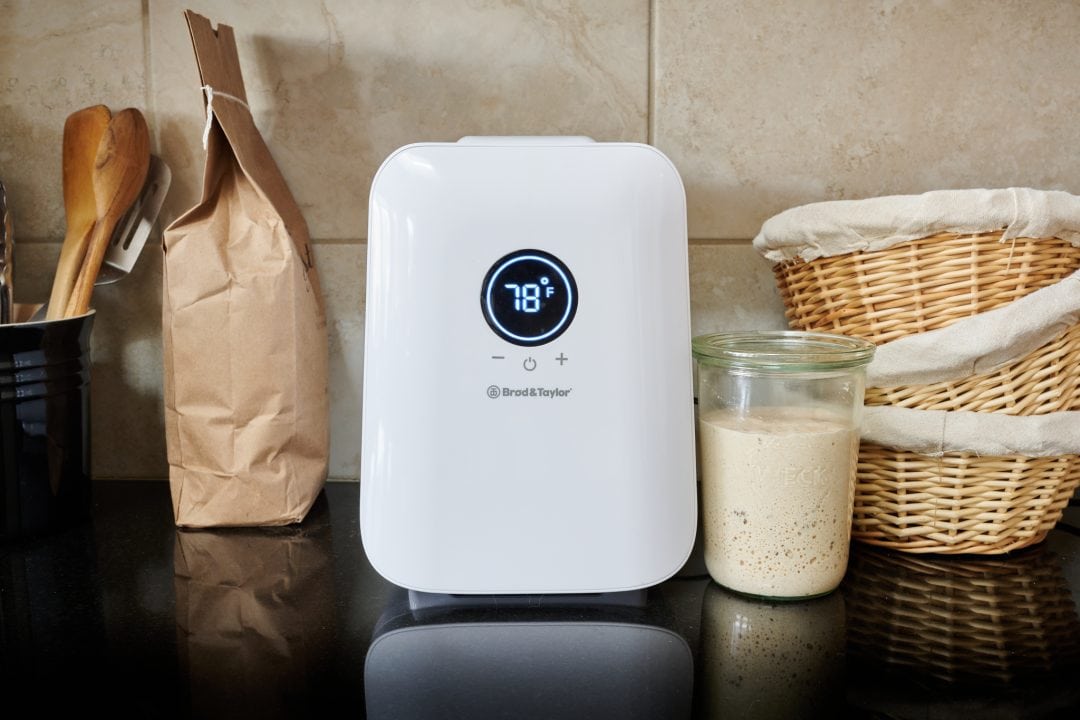I often say to bake great sourdough bread, you need a strong sourdough starter. Our bubbling culture of beneficial bacteria and wild yeasts have the burden of leavening and flavoring our bread dough. If our starter is sluggish because it’s been in the refrigerator for too long or has been neglected on the counter, it can negatively impact the entire fermentation process. This might mean underproofed or lackluster bread.
To bake great sourdough bread, you need a strong starter.
So I set out to help Brød & Taylor design a small home unit that will make starter maintenance much simpler. And we did just that—the Sourdough Home takes the guesswork out of keeping your starter strong, healthy, and ready for baking when you are.
In my experience, the typical issues home bakers encounter revolve around their sourdough starter. Usually, it’s a starter that wasn’t properly cared for or it wasn’t used at the right time. These root causes can result in a dough that was underproofed, and believe me, I’ve been there!
So, we designed the Sourdough Home to heat and cool to keep your sourdough starter at precisely the right temperature to suit your baking schedule.
A quick disclosure: I helped B&T design the Sourdough Home, all the way from the initial design sketches to testing final prototypes, and I’m working with them on its promotion and will be financially compensated.
Real Quick: Why Do I Love the Sourdough Home?
- It lets me keep my starter at the perfect temperature to suit my baking schedule.
- When it’s cold outside, it heats for strong fermentation and more flavor.
- When it’s warm outside, it cools to slow fermentation.
- The interior is incredibly easy to clean. If something spills, just wipe it with a cloth.
- It uses low power, is quiet, and is small enough to stash anywhere in the kitchen.
- It takes the guesswork out of sourdough starter maintenance.
Ultimately, because I can dial in the temperature of my starter to precisely what I want to maximize bacteria and yeast activity and have my starter ripe when I want.
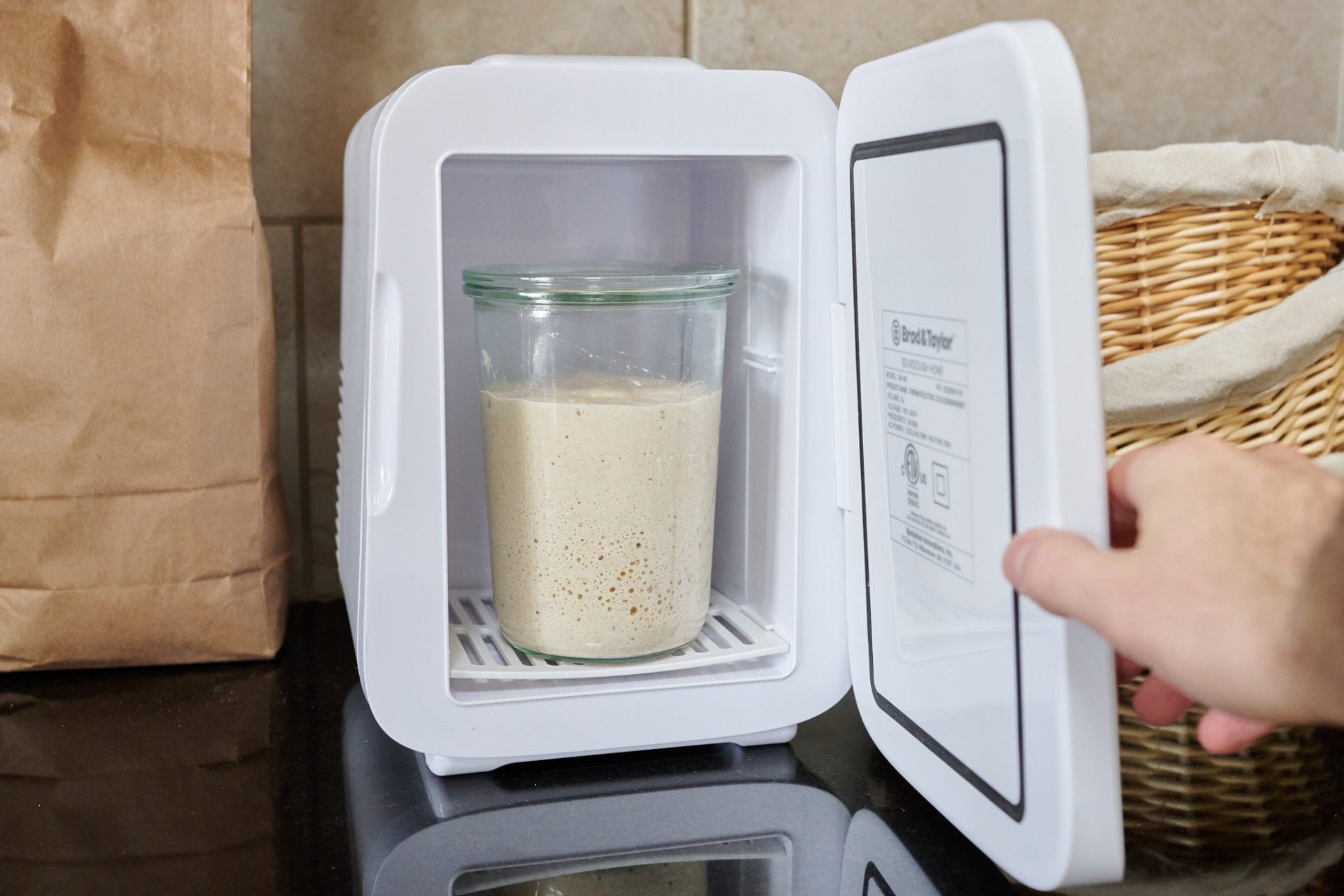
What is the Sourdough Home?
The Sourdough Home is a small appliance designed to hold a sourdough starter at a precise temperature. The unit can heat and cool and be set to any temperature between 41 to 122°F (5 to 50°C). This lets you control your starter’s ripening schedule and adjust the balance of yeast and bacteria to change the flavor, aroma, and texture of your sourdough bread.
Why is the Sourdough Home Useful?
You all know how I’m a stickler for paying attention to temperatures during the entire bread-making process, and for good reason. Temperature is incredibly important because it’s the driving force behind fermentation. If the temperature your starter is kept at is too cool, it will take a long time to ripen and is usually used in an under-ripe state. And conversely, if the temperature your starter is kept at is too warm, it will ripen too quickly and become overly acidic.
You can use the Sourdough Home to keep your sourdough starter at whatever temperature you need to ensure it’s ready to use when you want.
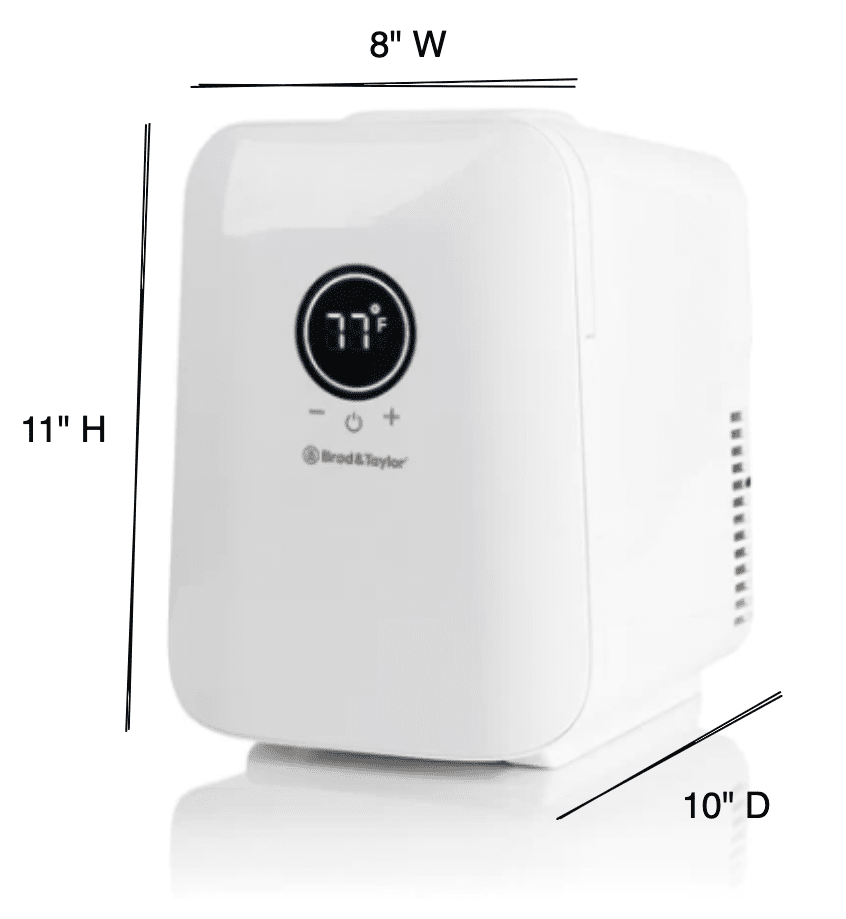
Sourdough Home Specs
Since the Sourdough Home is a small unit, I like to keep it inside my pantry. Similarly, it can also fit just about anywhere on your kitchen counter without taking up much space. It has a small fan inside that runs quietly, similar in sound to a small computer fan running idle.
The Sourdough Home is designed to be just large enough to fit your sourdough starter, but you can comfortably fit a variety of other jars inside if you’re into other types of fermentation (more on this below).
Outside dimensions
| Height | Width | Depth |
|---|---|---|
| 11-inches (28 cm) | 8-inches (23cm) | 10-inches (25cm) |
Inside dimensions
| Height | Width | Depth |
|---|---|---|
| 7 1/2-inches (19cm) | 5 1/8-inches (13cm) | 5 1/2-inches (14cm) |
What Can Fit Inside The Sourdough Home?
You can fit a single 1-liter (1-quart) jar inside or use the provided shelf to fit two smaller jars. As you can see below, there’s plenty of room to keep my favorite 3/4-liter sourdough starter jar inside. If you use smaller jars, say a 1/2-liter Weck jar, you can fit that on the bottom, insert the shelf, and place a smaller jar on top (two 1/2-liter Weck jars will not fit).
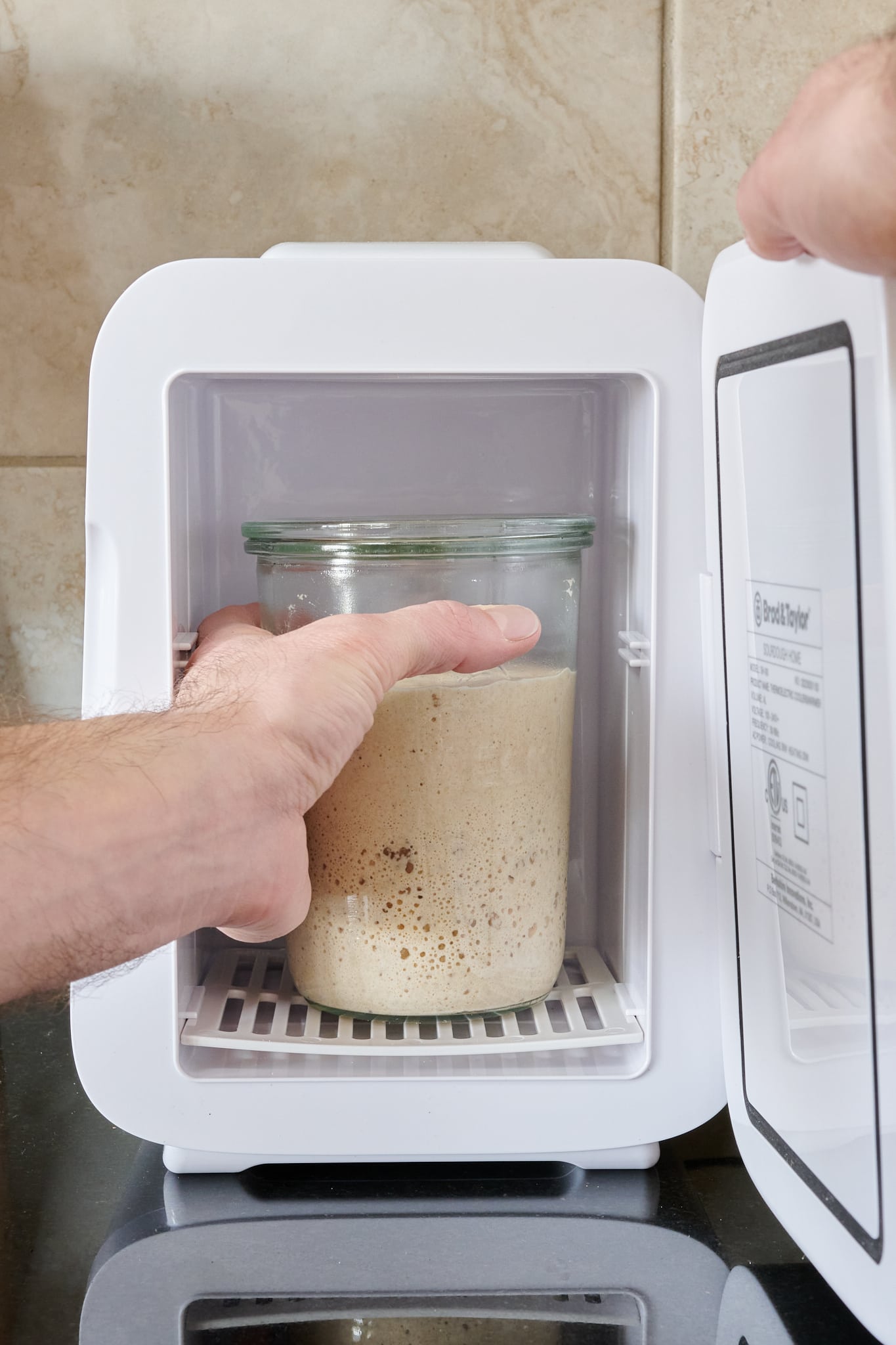
How to Use The Sourdough Home
Using it really is as simple as set-and-forget.
Setting the temperature is as simple as you might think: press the “+” or “-” buttons to change the inside temperature to whatever you desire. I set the temperature to 78°F (25°C) to keep my starter warm and ready for feeding every 12 hours, consistent with how I feed my sourdough starter. Using it really is as simple as set-and-forget.
If you want to feed your starter less, you can keep the same ratio of ingredients and reduce its maintenance temperature.
How Can I Feed My Starter Once a Week?
Many home bakers prefer baking only on the weekend. This can mean many sourdough starter feedings during the week to keep it healthy and active. Or, you can keep your starter in the refrigerator and take it out a day or two before using it. However, the cold temperatures of a refrigerator (usually around 38°F/3°C) result in a sluggish starter that needs a few feedings to regain full strength.
Instead of keeping your starter at super cold refrigerator temperatures, the Sourdough Home can be set to 44-48°F (6-8°C), which is cold but not too cold. This will slow fermentation in your starter, so you need only one feeding a week, but keep it warm and active enough to be ready for weekend baking without the need to feed it beforehand.
Of course, this highly depends on your sourdough starter’s makeup, so adjust as necessary to achieve the feeding schedule you’re after. For instance, you can play with 10%, 20%, or more (in baker’s percentages) starter carryover at each feeding and see how long it takes to ripen. Additionally, your starter may benefit from one room-temperature feeding before mixing it into bread dough, or making a levain.
Read how I feed my starter once every five days in my Sourdough Home user guide.
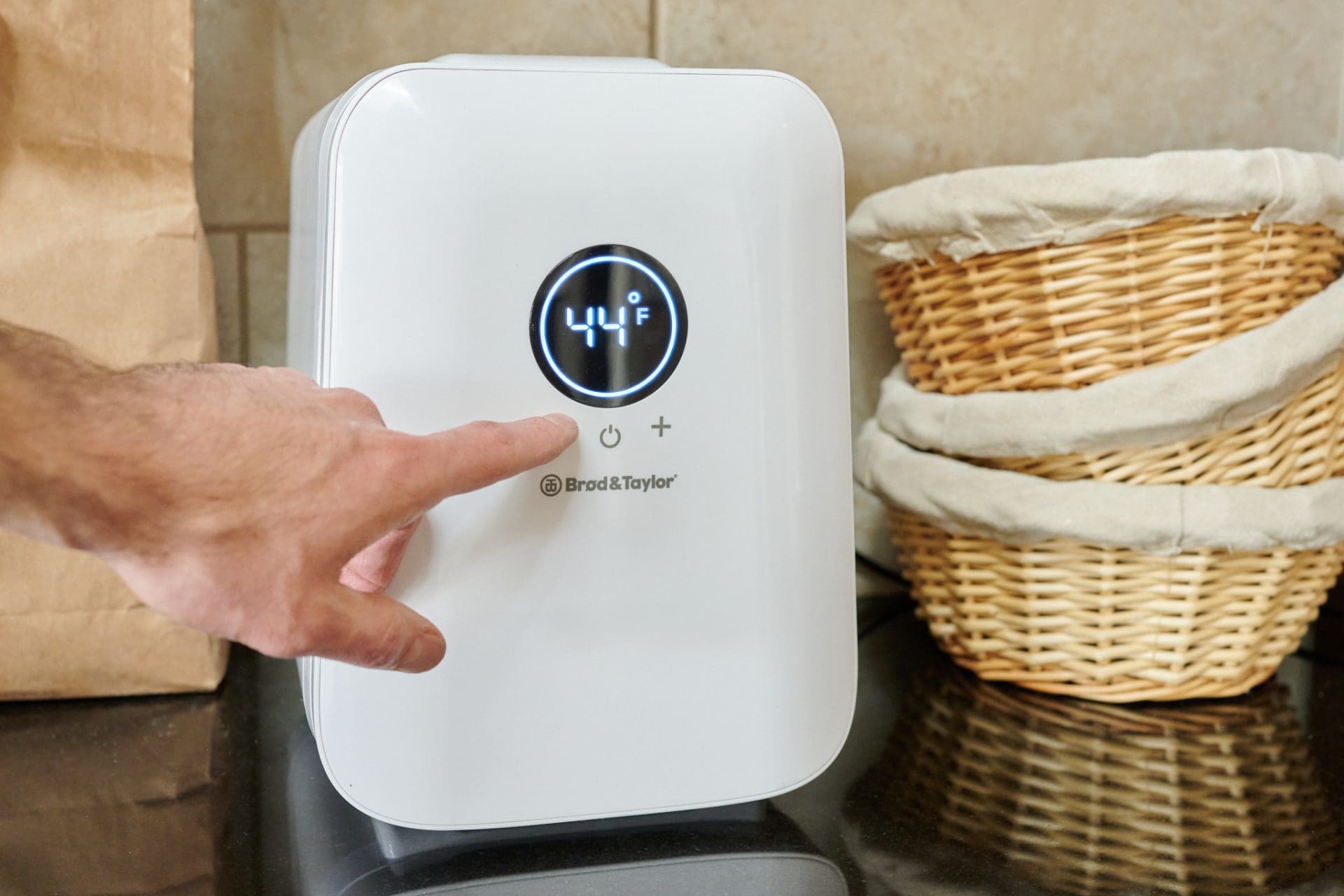
How to use the Sourdough Home to Make a Levain
You can use the Sourdough Home to provide the right conditions for your levain for a particular bake. Since a levain is the same thing as a starter, set the temperature control to whatever a recipe says and let it ripen for however long the recipe indicates. While this is happening, I’ll set my starter to the side to wait its turn to go back into the Sourdough Home once the levain is removed.
For instance, with my Beginner’s Sourdough Bread recipe, mix together the levain ingredients (flour, water, and ripe sourdough starter), set the Sourdough Home to 75°F (23°C), and slide in your jar. Then, return in 5 to 6 hours to find a perfect ripe levain ready for use.
Should I Still Buy the Folding Dough Proofer?
I do plan to use both the Sourdough Home and the Folding Dough proofer in my baking. The Sourdough Home and the Folding Dough Proofer are complementary tools used at different parts of the sourdough bread-making process. You use the Sourdough Home to keep your starter or levain at precisely the right temperature by heating and cooling, whereas you use the Folding Dough Proofer to keep larger batches of dough warm for strong fermentation.
See my guide to using the dough proofer for more on how I use it →
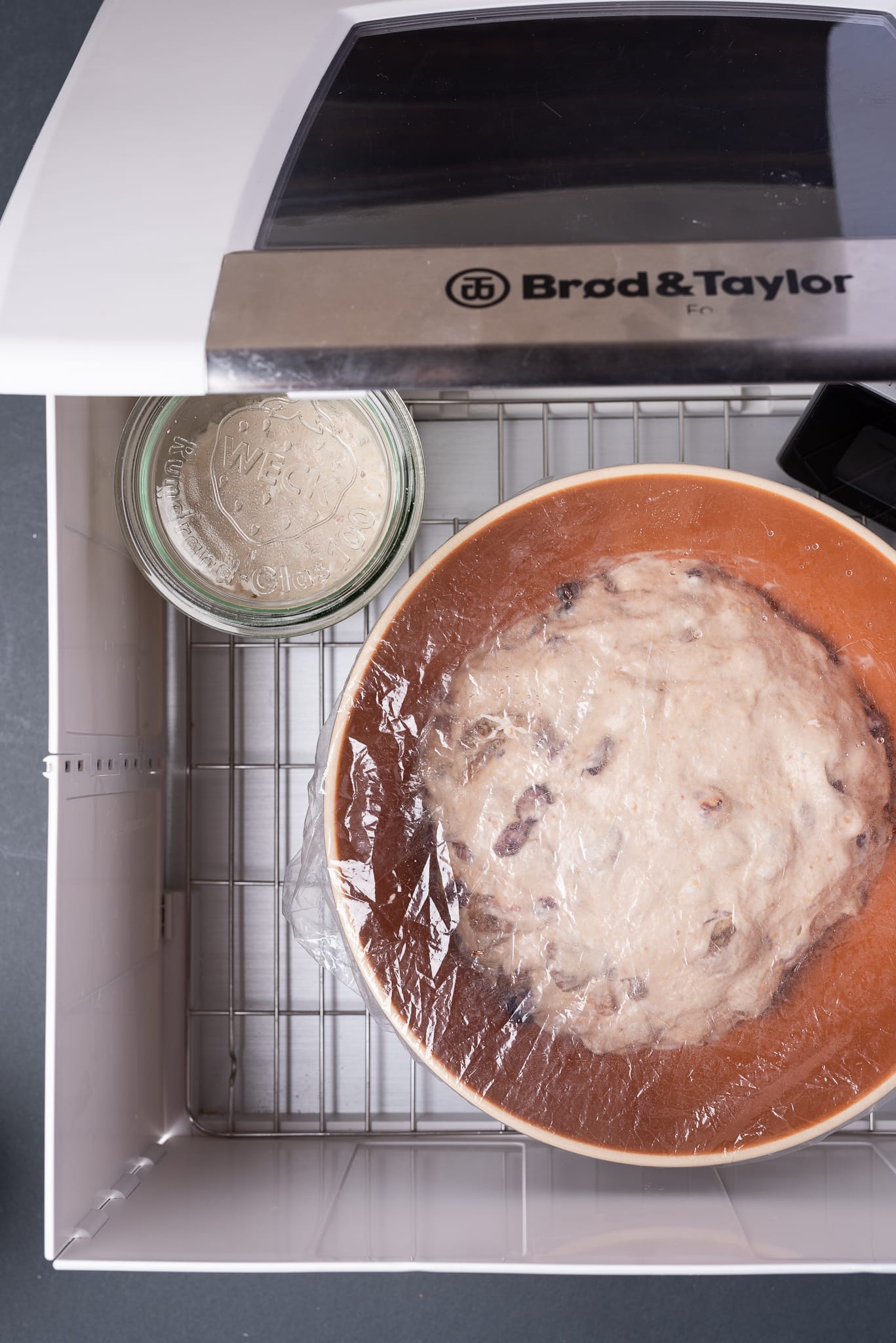
What Else Can I Use the Sourdough Home For?
Since the Sourdough Home can heat and cool, it can be used for other culinary purposes besides sourdough bread. You can use it for:
- Panettone: Maintain your pasta madre (lievito made) for panettone at the perfect cool temperature.
- Kombucha: Keep your SCOBY happy and fermenting lively, even in the winter.
- Yogurt: Use the Sourdough Home to keep your yogurt culture at the right temperature and ready to use.
Really, any type of culture can benefit from being kept inside the Sourdough Home at the optimal temperature for its type of fermentation.
How Does the Sourdough Home Heat and Cool?
The Sourdough Home is built around a Peltier module (thermoelectric module) that can both cool and heat. When an electric current is passed through the module, a plate will heat. If the current is reversed, the plate will cool. There are several advantages to using this technology, including energy efficiency, high precision temperature control (+/- 1°C), it’s compact, noiseless (except for the fan to help cool the heatsink), and vibration-free.
Watch Me Use the Sourdough Home
In the video below, you can watch me use the Sourdough Home and discuss why it’s so helpful for starter maintenance and, ultimately, for baking a fantastic loaf of bread.
Sourdough Home FAQs
How do I change the Sourdough Home to Celsius or Fahrenheit?
Press and hold the “+” and “-” buttons simultaneously until the display changes from Fahrenheit to Celsius.
Is the Sourdough Home loud?
The unit has a small fan inside, and I’d say it’s about as loud as a quiet computer fan.
Does the Sourdough Home use a lot of power?
Brød & Taylor lists the unit as low power, and it uses a max 30W of power when actively heating or cooling. Once the unit reaches the desired temperature, it will cycle on and off to keep the interior at the set temperature, which means it isn’t always cooling or heating. By comparison, the minimum power usage of a TV set-top box is between 50 to 200 watts. Ultimately, the amount of power it uses will be dependent on the ambient temperature around the unit (i.e., if it’s very cold outside and you want to heat, it will use more energy to reach the desired temperature).
What is the bump on the top of the Sourdough Home?
It’s a handle for carrying the unit around!
Does the display stay lit up all the time?
Yes, but it dims significantly after a short time when no buttons are pressed.
What’s Next?
To see how I use the Sourdough Home to feed my starter less often (2, 3, and even 5 days!), see my guide to using the Sourdough Home.
If you’d like to look at more of the best tools for making sourdough bread at home, see my best baking tools roundup.
💬 Have any questions about the Sourdough Home? Let me know in the comments below!


